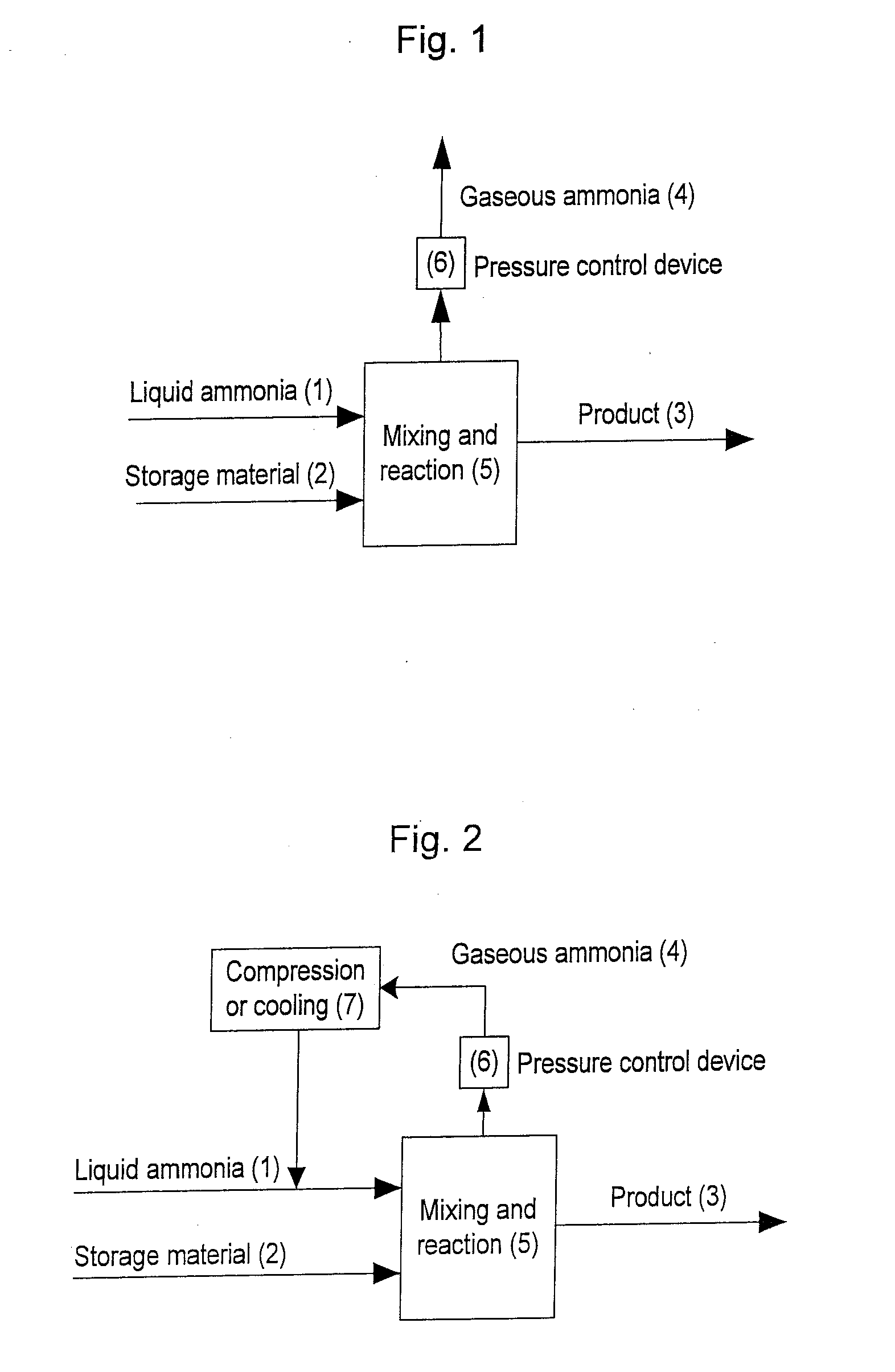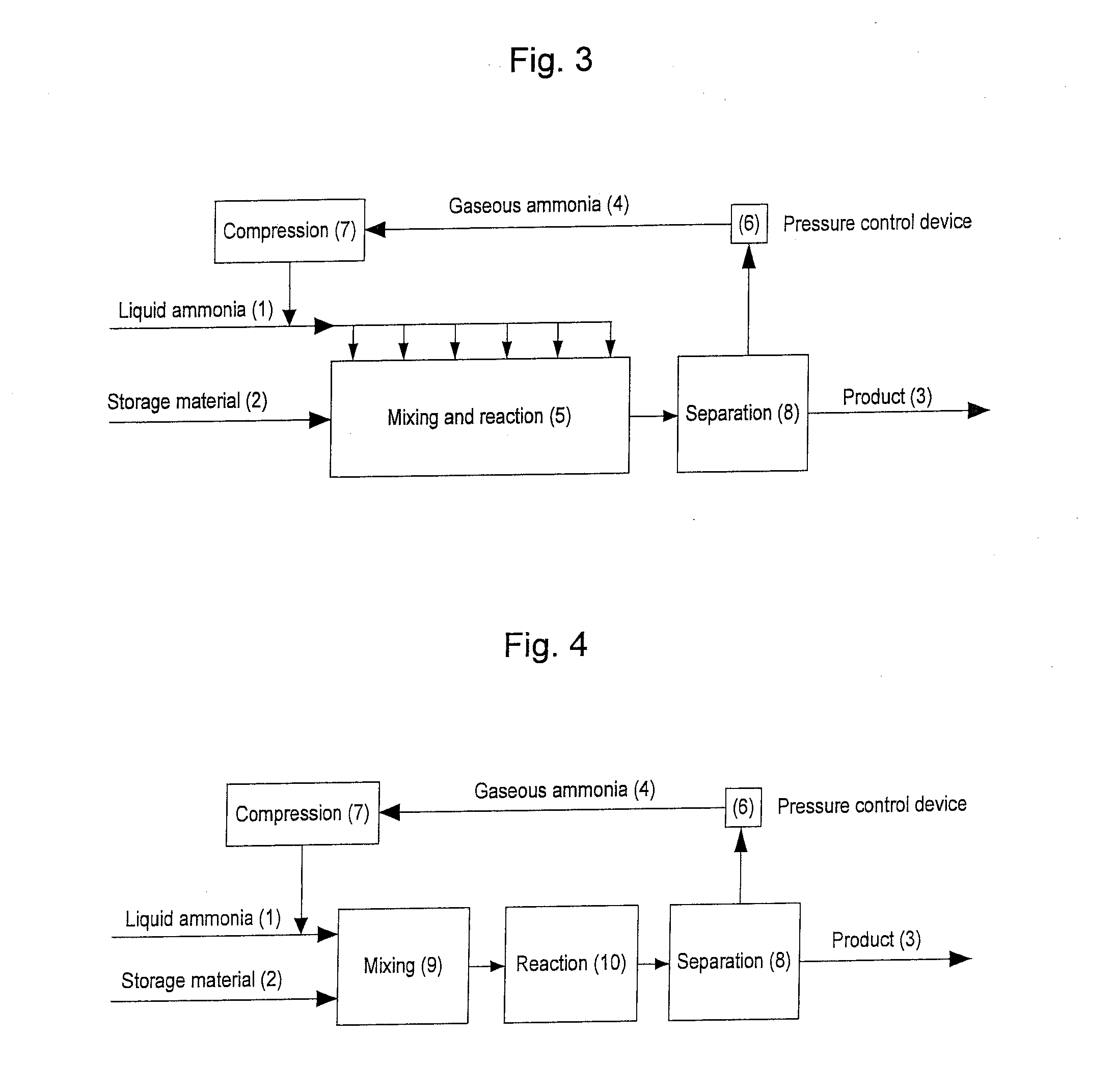Production of Saturated Ammonia Storage Materials
- Summary
- Abstract
- Description
- Claims
- Application Information
AI Technical Summary
Benefits of technology
Problems solved by technology
Method used
Image
Examples
example 1
[0057]One mole SrCl2 can bind r=8 mole of NH3 as Sr(NH3)8Cl2. The average absorption energy of ammonia in SrCl2 is Ēa=42.2 kJ / mole. 1000 kg of SrCl2 with a molar mass of 158.5 g / Mole corresponds to n=6.4×103 mole that can bind ms=50.5×103 mole of NH3. The amount of NH3 needed for removal of excess heat is then
me=msE_a-EeEe=40.5×103
mole of NH3. The total minimum amount of ammonia needed for the process is then mtot=91×103 mole or 1550 kg.
[0058]If the same calculation was done for CaCl2, the result would be in the same range, since the binding energy of ammonia to CaCl2 is similar to that of SrCl2. For MgCl2, the average absorption energy is approximately Eb=65 kJ / mole, which gives considerably higher mass of ammonia needed to be supplied to the saturation process to balance the higher heat release per ammonia molecule from the formation of Mg(NH3)6Cl2 compared to Sr(NH3)8Cl2.
example 2
[0059]In one experiment 3 kg of SrCl2 is saturated with ammonia in a rotating vessel. A total amount of ammonia of 4.65 kg is dosed into the system at a rate 150 g / min at a vessel pressure of 8 bar. The salt is saturated to more than 95% within 35 minutes. The reactor temperature is close to room temperature at all times.
example 3
[0060]Example 3 is similar to Example 2 except that the total amount of ammonia is dosed within the first 2 minutes. After 25 minutes release of excess ammonia stops and the material is saturated to a degree of more than 95%.
PUM
 Login to View More
Login to View More Abstract
Description
Claims
Application Information
 Login to View More
Login to View More - R&D Engineer
- R&D Manager
- IP Professional
- Industry Leading Data Capabilities
- Powerful AI technology
- Patent DNA Extraction
Browse by: Latest US Patents, China's latest patents, Technical Efficacy Thesaurus, Application Domain, Technology Topic, Popular Technical Reports.
© 2024 PatSnap. All rights reserved.Legal|Privacy policy|Modern Slavery Act Transparency Statement|Sitemap|About US| Contact US: help@patsnap.com










